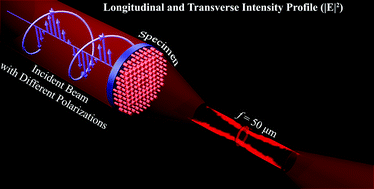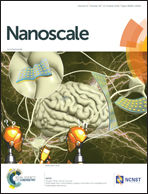Polarisation insensitive multifunctional metasurfaces based on all-dielectric nanowaveguides†
Abstract
Metasurfaces, two dimensional (2D) metamaterials comprised of subwavelength features, can be used to tailor the amplitude, phase and polarisation of an incident electromagnetic wave propagating at an interface. Though many novel metasurfaces have been explored, the hunt for cost-effective, highly efficient, low-loss and polarisation insensitive applications is ongoing. In this work, we utilise an efficient and cost-effective dielectric material, hydrogenated amorphous silicon (a-Si:H), to create a ultra-thin transmissive surface that simultaneously controls phase. This material exhibits significantly lower absorption in the visible regime compared to standard amorphous silicon, making it an ideal candidate for various on-chip applications. Our proposed design, which works on the principle of index waveguiding, integrates two distinct phase profiles, that of a lens and of a helical beam, and is versatile due to its polarisation-insensitivity. We show how this metasurface can lead to highly concentrated optical vortices in the visible domain, whose focused ring-shaped profiles carry orbital angular momentum at the miniaturised scale.



 Please wait while we load your content...
Please wait while we load your content...